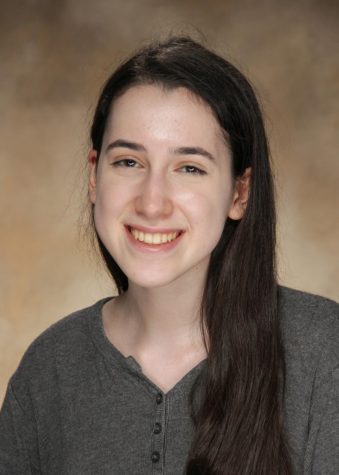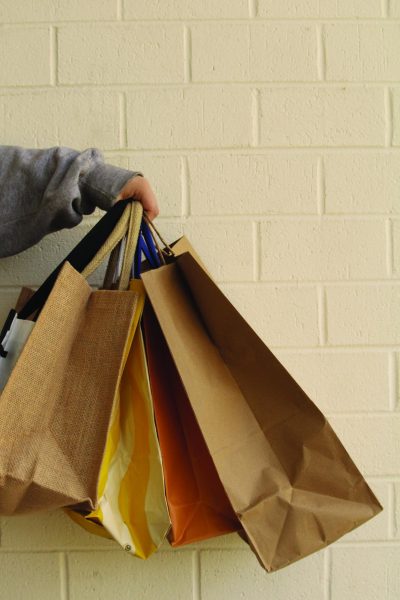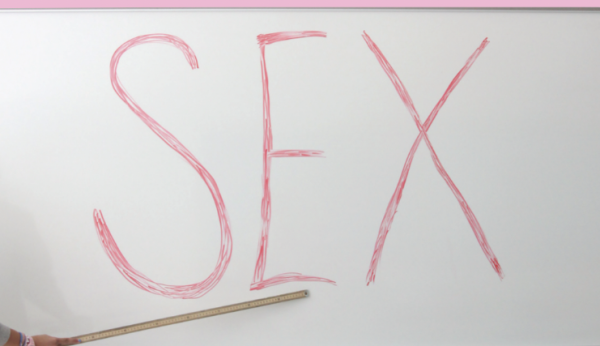Back to our roots
Visits to Eastern Europe shed light on identity, education and regional history
Summer in Ukraine
Over 4,000 miles separate Rockville, Md. and an area that 60 percent of Jews used to call home: Eastern Europe.
This distance leaves the majority of CESJDS students, like senior Sara Heckelman who has no family currently living there, unable to relate much to the region. For Heckelman, however, engaging with Eastern Europe in a modern setting helps link her to her great-grandparents who used to live in the area.
This past summer, Heckelman had the opportunity to be a counselor at Camp Ramah Yachad, a conservative Jewish camp in Ukraine. This was the first time Ramah offered the program to American campers who would otherwise only have the option of going on Ramah Seminar, a summer trip to Israel.
According to Heckelman, her initial apprehension about traveling to and being a counselor in a foreign country was relieved by her familiarity with Ramah, along with having two other JDS students in the program. She also took comfort in “knowing that it’s okay to go out of your comfort zone and experience very different things from your normal life.”
Despite her prior experience as a Ramah Day Camp counselor in the U.S., Heckelman struggled with her job as a counselor at the Ukrainian camp because of the language barrier between her and her campers, who spoke either Ukrainian or Russian.
“A lot of it was learning how to communicate in ways other than language,” Heckelman said. “It was a lot of dancing and singing and talking with hand motions.”
Notwithstanding the language barrier, Heckelman was able to connect to her camp community on the first Friday night of the program. The campers had short and simple services due to their limited Jewish education, but Heckelman was surprised to find that she recognized the same Hebrew song tunes sung by children that grew up halfway around the world from her.
“We have different first languages, but there we are, sitting and singing the same songs,” Heckelman said.
Later in the summer, campers in the Israeli dance elective gave a performance which Heckelman had choreographed for them. Heckelman said she felt grateful that the Ukrainian campers had the ability to demonstrate their faith in that way, and also that through their shared religion, she was able to form new friendships with kids from so far away.
Through her time as a counselor in Ukraine, Heckelman also developed her own Jewish identity.
“I realized how my religion isn’t just the school I go to or the prayers I sing,” Heckelman said. “It’s a culture and it’s a connecting factor between people.”
Teacher exchange
Today, Eastern European Jewish communities like the one Heckelman visited are beginning to rebuild themselves and overcome the challenge of re-establishing a strong Jewish population. For a week this November, six JDS teachers will visit Budapest to support the Lauder Jewish Day School and its community in their effort to revive the Eastern European Jewish community.
The mentoring exchange program, created by the non-profit SOS International, is designed to match American and European day schools and to create a multi-year relationship between them.
Math teacher Victoria Ball, art teacher Benjamin Tellie, Jewish history teacher Rachel Bergstein, Jewish Text teacher Paul Blank, science teacher Daniela Munteanu and history teacher Natalie Levitan will be participating in the program. They will be teaching lessons and providing teachers in the Hungarian school with their knowledge of education from a Jewish day school in the U.S. In return, they will be observing another Jewish community and bringing their insights back to JDS.
Ball looks forward to visiting Hungary, where she will also get the opportunity to tour and volunteer in the local community. She said that she is also interested in interacting with a very different school, with the ultimate goal of having both schools thrive.
According to Ball, the idea of having a relationship and supporting a school in Eastern Europe is particularly meaningful. When she went on the Eastern Europe trip with the Class of 2010, Ball said it was striking to see towns that used to have large Jewish populations reduced to around two people.
“The idea that you wouldn’t just sort of put up a plaque that said ‘Jews once lived here,’ but actually again have a thriving synagogue and again have a thriving Jewish community feels like a really worthwhile thing to do,” Ball said.
In addition to seeing how she and the rest of the JDS teachers can assist the European school, Ball also hopes to gain an “increased international perspective.” By visiting a community dissimilar to the one at JDS, she hopes to see many different ways schools and classes can run and expand her personal ideas about education.
“I think the longer one spends in education, your job becomes not just doing the best job yourself, but helping others to do their best job,” Ball said. “I feel like this is a good learning opportunity for me to learn what another school looks like, but also to improve my skills in helping others grow as educators.”
Leaving home
While Ball is prepared to learn how an Eastern European school functions, English teacher Ena Djordjevic is already familiar with the system.
Djordjevic was born in the former Republic of Yugoslavia, in what is currently divided into Bosnia, Croatia and Serbia. When she was young, she lived under a socialist government that did not allow her to openly express views like religion.
In 1991, when Djordjevic was six, war broke out in Yugoslavia resulting in her and her family fleeing and living as refugees in Poland, Germany and Austria before ending up in Tennessee when she was 12.
According to Djordjevic, it was difficult to integrate into the United States, as she found many differences between her old and new communities. She said that she had come from a place that was very community-oriented, while her new American home was rural, traditional and harsh on both foreigners and outsiders, although she thinks it has changed since.
One summer, Djordjevic returned to Croatia where she attended school with her cousin. She saw that their learning was much faster-paced than what she was used to, and that second-graders were doing long division and complicated math problems that she was not capable of as a fourth-grader.
Djordjevic also observed that while students in Croatia were friendly, social and had similar lives to American children outside of school, the children in Croatia took school more seriously than any of the students she interacted with in her American neighborhood.
“I found the schooling to be much more rigorous and everything was much more supervised, much more controlled,” Djordjevic said. “Everyone had done what they were supposed to do [and] sat in rows; it was a lot less of a free-spirited kind of classroom environment.”
Today, Djordjevic still has family living in Bosnia, Croatia and Serbia whom she visits every year. During these visits, she finds that Eastern Europe is adapting more to a Western lifestyle and using developed technologies, but still holding on to many of its older traditions, such as in education.
“It’s now catching up to a lot of the thought process of American schooling and American education, but it still has some old footholds in traditional memorization of texts and more rigorous application to things,” Djordjevic said.
Although Djordjevic has now lived in the United States for the majority of her life, she continues to maintain her connection with her childhood and family through her visits with her relatives living both in the United States and Eastern Europe. Through programs like Heckelman’s camp, the partnership with a European day school or a vacation, those without an immediate connection to Eastern Europe can still venture back and forge a new one.
“It’s kind of hard to forget your roots,” Djordjevic said. “You’re always going to feel like there’s a part of you that’s somewhere else.”







